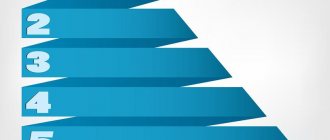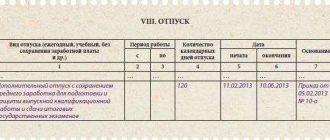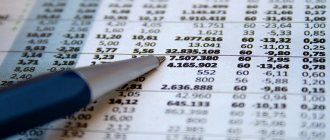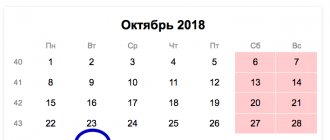Computer Depreciation Period 2020
For example, fixed assets are vehicles, residential and non-residential real estate, computers, industrial equipment, tools and inventory, inseparable improvements to leased facilities, etc. The law allows companies to independently assign their property to one or another depreciation group, based on the intensity of its use , features of economic and production processes and other factors that make it possible to determine the period of useful service.
Indeed, the innovations are quite significant: not only the configuration of the codes has changed (now they are written in the format ***. **. **. **. ***.) but also the structure of the Classifier. With the introduction of new technologies, it takes into account objects that did not exist during the period of approval of the previous document, as well as some positions were deleted, combined or divided. For example, one general object “Information resources in electronic form” now includes several types of software. For some property items, changes to the OKOF code also resulted in changes in the useful life; for others, the changes affected only the code, without in any way affecting the period of effective use.
Computer: shock absorption group
The PC is listed in the note to the 2nd depreciation group with code OKOF 330.28.23.23 “Other office machines.” This also includes printers, servers of various capacities, network equipment, information storage systems, as well as modems - all of them are listed in the note to this code, and, therefore, belong to the 2nd group, the SPI of equipment in which is a period of 2 years and 1 month to 3 years.
Laptops also belong to the PC category, which means they can be classified in group 2 and assigned the same code. Note that there is code 320.26.20.11 “Portable computers - laptops...”, which is also quite suitable for PCs. An enterprise has the right to choose which code is most suitable for designating a laptop, focusing on the parameters of the object and independently establishing the SPI.
There is one caveat that accompanies the installation of a PC. Sometimes the company purchases computer components (hard drive, monitor, keyboard, mouse) separately, reflecting the purchase on material accounts. There, these objects are taken into account if further resale is expected, but in these cases there is no talk of classifying the object by depreciation group, since they are materials/goods, but not fixed assets, and cannot function independently. Thus, it is impossible to assign a code to a monitor or system unit separately from the articulated working structure called a computer.
To put a PC into operation, it is necessary to bring it to an operational state, that is, to connect these elements into one complex, ready for operation and transfer it to the OS, assigning an inventory number, and then determine the SPI and assign the object to the 2nd depreciation group .
Useful life of a computer
- expected lifespan based on expected performance or capacity;
- expected physical wear and tear, which depends on the operating mode, natural conditions, the influence of an aggressive environment and the repair system;
- regulatory and other restrictions on the use of the facility.
In practice, to reduce differences between accounting and tax accounting data, the useful life is established by analogy with tax accounting based on the Classification of fixed assets included in depreciation groups (Government Decree No. 1 of 01.01.2002). After all, accounting legislation does not contain a ban on the use of such a Classification.
Depreciation groups of fixed assets: how to determine in 2020
The organization determines the useful life of a fixed asset in order to calculate depreciation in accounting and tax accounting. From May 12, 2020, accountants have been using the updated Classification of Fixed Assets. Let us tell you in more detail what has changed and how to determine depreciation groups in 2020.
Fixed assets (FPE) of an organization, depending on their useful life (SPI), for profit tax purposes are assigned to one or another depreciation group (Clause 1, Article 258 of the Tax Code of the Russian Federation). The useful life of the OS is determined by the organization itself, taking into account the classification approved by Decree of the Government of the Russian Federation of January 1, 2002 No. 1 (Resolution No. 1).
We recommend reading: How many meters per person?
https://youtu.be/sMm4TwfdVAs
Depreciation 2020
Depreciation charges in accounting are recognized as expenses for ordinary activities and are reflected in the debit of the accounts for accounting for production costs (sales expenses) in correspondence with account 02, subaccount “Depreciation of fixed assets received on lease” (items 5, 8, 16 PBU 10/99, clause 9 of the Leasing Guidelines).
To accurately calculate deductions taking into account wear and tear, it is necessary to take into account the mileage since the start of operation, climatic conditions, the locality in which the vehicle will be used, and the ecological state of the region. The brand and country of manufacture of the car is also important. The quality of the build determines how much maintenance and service costs will cost.
Computer Depreciation Period 36 Months In 2020
• depreciable fixed assets used for work in aggressive environments or extended shifts - in an amount not exceeding 2; • depreciable fixed assets that are the subject of a financial lease agreement (leasing agreement) - in an amount not exceeding 3; • own fixed assets owned by taxpayers - industrial agricultural organizations.
It is used to calculate depreciation. The division of this property is carried out on the basis of the All-Russian Classifier of Fixed Assets (OKOF 2020). Based on the period, the depreciation rate is calculated. In the article you will find a table and a Directory of all OS groups current for 2020.
Depreciation periods for computer equipment - calculation example
Let us assume that in order to bring accounting and tax standards closer together, the company uses a linear method for calculating depreciation amounts. In July 2020, the retailer purchased a laptop worth RUB 125,400. According to the requirements of the OS Classifier, the service life of a laptop for calculating depreciation is determined to be 30 months. (2.5 years). How to calculate depreciation?
- In general, NA is defined as follows:
The normal activities of any company today are closely related to the good equipment of its existing services with communications equipment, communication systems, computers, and office equipment. But the acquisition of this property often poses a number of questions to the enterprise related to establishing their service life and the depreciation group that must be assigned to a particular object, since all of the listed assets are depreciable property. Let's figure out what should be considered when solving such problems.
Computer depreciation period 2020
And, on the other hand, if the amount of the lease payment exceeds the amount of accrued depreciation on the leased property, then the lessee has the right to additionally take this difference into account as part of other tax expenses of the reporting period.
Accordingly, when carrying out the documents Internal movement of fixed assets and intangible assets in the program “1C: Accounting of a state institution 8” with the operation Putting into operation OS (in “1C: Accounting of a state institution 8” edition 1) and the Statement for issuing OS for the needs of the institution (in “ 1C: Accounting Department of a State Institution 8" edition 2) with the operation Commissioning for objects put into operation in 2020 costing from 3,000 rubles. up to 10,000 rub.
Computer service life of fixed assets 2020
Accordingly, this technique can be used not only to determine the SPI of a computer, but also of other objects.
For example, the useful life of a compressor (air and other) can be equal to 1-2 years, since such objects are classified as depreciation group 1 according to Resolution No. 1 of 01/01/02. At the same time, the certificate for the phone indicates its service life - three years. Is it possible to write off telephone expenses (accrue depreciation) based on the period specified in the certificate? The practice of leasing property is very popular today.
Depreciation of fixed assets
Example : Vector LLC, which uses the simplified tax system “income-expenses”, purchased a car in December 2020 for 200,000 rubles. The car is produced in 2010. This car has been used. The actual period of use of the car at the time of sale was 3 years and 11 months or 47 months. The organization determined the useful life to be 5 years or 60 months. This period is determined on the basis of the Classification of fixed assets, approved. Decree of the Government of the Russian Federation dated January 1, 2002 No. 1. This option for determining the useful life is enshrined in the accounting policy of Vector LLC. The method of calculating depreciation in accounting is fixed linear. The commissioning date for the facility is December 2020. The vehicle will be used to deliver goods.
With this method, depreciation is calculated based on the natural indicator of the volume of production (work) in the reporting period and the ratio of the initial cost of the fixed asset object and the estimated volume of production (work) for the entire useful life of the fixed asset object.
Depreciation period and write-off after the end of useful life
Fixed assets (FPE) and intangible assets (ITA) owned by the company are subject to a mandatory depreciation process. This allows you to recover the costs of their acquisition, gradually transferring them to the cost of production in a manufacturing enterprise or costs in a retail enterprise.
The process is quite complex, requiring consideration of many nuances. Today we will take a closer look at the concept of depreciation period and the procedure for writing it off.
Depreciation period
To start calculating depreciation, you need to determine the useful life of the property (SPI).
This concept refers to the period of time during which the OS can be used for the purpose of acquiring it.
Economic entities independently determine the SPI, relying on technical documentation, expert opinions and the expected regime and conditions for using the object. This must be done on the day the OS is put into operation.
In a number of cases, an extension of the SPI is provided:
- after OS reconstruction;
- after OS upgrade;
- after technical re-equipment of the OS.
SPI is necessary to correctly classify an object into one of the depreciation groups. Information about depreciation groups and the corresponding SPI is contained in the Classification of OS, approved by the Government of the Russian Federation. Resolution No. 640 of July 7, 2020 The latest version of the document was approved.
A total of 10 depreciation groups have been established, which correspond to the following SPI:
Depreciation group SPI in years
| from (over) | up to (inclusive) | |
| 1 | 1 | 2 |
| 2 | 2 | 3 |
| 3 | 3 | 5 |
| 4 | 5 | 7 |
| 5 | 7 | 10 |
| 6 | 10 | 15 |
| 7 | 15 | 20 |
| 8 | 20 | 25 |
| 9 | 25 | 30 |
| 10 | 30 | – |
The group for intangible assets is determined according to the same classification. Only the establishment of SPI for this type of property has specific features. IPR for intangible assets is determined based on the duration of the patent for it, certificate or other document limiting the period of use of intellectual property.
This video will tell you about depreciation and useful life:
Frequency of accrual in 2019
The gradual write-off of the cost of an object begins from the first date of the month following the month of its commissioning. Depreciation amounts are accrued monthly until the full cost of the asset is written off, or until it is disposed of.
The depreciation process cannot be stopped until the end of the STI of the property. The following cases are exceptions:
- reconstruction of the facility lasting more than 12 months;
- preservation of the OS for a period of more than 3 months.
In the case of reconstruction, after the resumption of the depreciation process, an extension of the SPI is permissible. This is due to the fact that during downtime the object was not subject to wear and tear; in addition, the modernized OS increases its operating capacity, and with it, the write-off value.
When an object is mothballed, extension of the SPI is not provided. However, you can continue to accrue depreciation after the completion of the joint venture. This is confirmed by clause 22 of PBU 6/01, which establishes that depreciation stops only after the final write-off of the cost of fixed assets.
Examples of JPIs in 2019
To get an idea of the terms of various fixed assets, consider examples of property belonging to each of the depreciation groups. There are 10 of them in total, and each is intended for a specific type of object. Let's take a closer look at them below:
- The first group with a period of 1 to 2 years includes various types of short-lived equipment. This could be construction tools, pumps for pumping liquids, air compressors, etc.
- The second group, with a period of more than 2 years, but not more than 3, includes lifting equipment, office equipment, liquid filtration units, etc.
- The third group, with a term of more than 3 years, but not more than 5, includes laboratory scales, telephones and other communication equipment, devices for counting banknotes, etc.
- The fourth group, with a period of more than 5 years, but not more than 7, includes reinforced concrete fences, power lines, agricultural machines for tillage, woodworking machines, etc.
- The fifth group, with a period of more than 7 years, but not more than 10, includes the heating main network, grain harvesters, fire engines, cars for transporting people, etc.
- The sixth group, with a period of over 10 years, but not more than 15, includes metal fences, railways, transport scales, fishing vessels, etc.
- The seventh group, with a period of over 15 years, but not more than 20, includes highways, bridges, cranes, river passenger ships, railway locomotives, etc.
- The eighth group, with a term of over 20 years, but not more than 25, includes river berths, passenger cars, safes, blast furnaces, etc.
- The ninth group with a period of over 25 years, but not more than 30, includes residential buildings, vegetable storage facilities, sea passenger ships, tank cars, etc.
- The tenth group with a lifespan of over 30 years includes industrial buildings, subway cars, perennial plantings, etc.
A more detailed composition of each depreciation group can be found in the OKOF Classifier, approved by the above-mentioned Resolution No. 640.
Depreciation of fixed assets: how and when to calculate? about this - video below:
OS
The depreciation accrued for each fixed asset is recorded monthly in account 02 (for the loan), which is called “Depreciation of fixed assets.” Depending on the type of activity of the enterprise, this account corresponds with accounts 20, 25, 26, 23, 44, 29.
The accumulated amount must be written off from account 02 after the object is fully depreciated. Additionally, write-off occurs in the following cases:
The write-off of depreciation, as well as other operations with it, is subject to mandatory reflection in the accounting accounts. In this case, the cost of the disposed object is taken into account in subaccount 01.2.
The wiring looks like this:
- D01.2 K01.1 – written off the original cost
- D02 K01.2 – depreciation written off
- D91 K01.2 – written off residual value
NMA
Depreciation of intangible assets is accounted for in account “05” of the same name. Let's consider what kind of transactions reflect the path of intangible assets in the enterprise.
- D04 K08 – accepted intangible assets for accounting
- D20 (25,26, 44...) K05 - depreciation was calculated
- D05 K04 – depreciation was written off upon disposal of intangible assets
- D91.2 K04 - written off the residual value of the retired intangible asset
It is important to correctly reflect all stages of the presence of fixed assets and intangible assets on the balance sheet of the enterprise, as well as initially accurately classify the acquired property.
SPI plays a leading role in the depreciation process, so it is this indicator that needs to be given maximum attention.
Carefully study the classifier, consult with specialists who will help you take into account the operating conditions of the object, and only then register it and begin calculating depreciation payments.
https://youtu.be/jHXlxx2r-n0
Write-off of depreciation in 1C is described in the video below:
Source: https://lsmanagement.ru/kommercheskoe-pravo-otchet-2019/buhgalteriya-zhaloba-2019/vneooborotnye-aktivy-jurist-2019/amortizatsiya-otvet-2019/sroki-i-spisanie-isk-2019/
Calculation of depreciation of fixed assets in 2020-2020
The procedure for accounting depreciation in 2020-2020 has not changed. However, in 2020, changes affected tax accounting. Thus, the Law of June 8, 2015 No. 150-FZ (clauses 7–8 of Article 5) introduced amendments to Art. 256, 257 Tax Code of the Russian Federation. They consist in increasing the value of property that is not classified as depreciable.
This is interesting: How much is Alimony for the Unemployed Now?
Depreciation involves the gradual inclusion in expenses of the cost of fixed assets, which is a significant amount for any organization. Fixed assets can participate in generating income for a long time and have a long service life.
Classification of fixed assets included in depreciation groups
The fixed assets classifier serves to assign a depreciation period for material assets and uses codes from the All-Russian Classifier of Fixed Assets. For fixed assets put into operation since 2020, the useful life is determined by the codes of the new OKOF OK 013-2014. For fixed assets introduced before 2020, the terms are determined by the codes of the old OKOF OK 013-94. If, according to the new classifier, the fixed asset belongs to another group of the organization, then the terms do not change. For tax accounting, refer to clause 8, clause 4, article 374 of the Tax Code of the Russian Federation and clause 58, article 2 of the Law of November 30, 2020 No. 401-FZ.
- The first group is all short-lived property with a useful life from 1 year to 2 years inclusive
- cars and equipment
- The second group is property with a useful life of more than 2 years up to 3 years inclusive
- cars and equipment
- Means of transport
- Industrial and household equipment
- Perennial plantings
- Third group - property with a useful life of more than 3 years up to 5 years inclusive
- Facilities and transmission devices
- cars and equipment
- Means of transport
- Industrial and household equipment
- The fourth group is property with a useful life of over 5 years up to 7 years inclusive
- Building
- Facilities and transmission devices
- cars and equipment
- Means of transport
- Industrial and household equipment
- Cattle working
- Perennial plantings
- Fifth group - property with a useful life of over 7 years up to 10 years inclusive
- Building
- Facilities and transmission devices
- cars and equipment
- Means of transport
- Industrial and household equipment
- Fixed assets not included in other groups
- Sixth group - property with a useful life of over 10 years up to 15 years inclusive
- Facilities and transmission devices
- Dwellings
- cars and equipment
- Means of transport
- Industrial and household equipment
- Perennial plantings
- Seventh group - property with a useful life of over 15 years up to 20 years inclusive
- Building
- Facilities and transmission devices
- cars and equipment
- Means of transport
- Perennial plantings
- Fixed assets not included in other groups
- Eighth group - property with a useful life of over 20 years up to 25 years inclusive
- Building
- Facilities and transmission devices
- cars and equipment
- Vehicles
- Industrial and household equipment
- Ninth group - property with a useful life of over 25 years up to 30 years inclusive
- Building
- Facilities and transmission devices
- cars and equipment
- Vehicles
- Group ten - property with a useful life of over 30 years inclusive
- Building
- Facilities and transmission devices
- Dwellings
- cars and equipment
- Vehicles
- Perennial plantings
We recommend reading: Benefits for children of Chernobyl liquidators
Depreciation of furniture in 2020
If you cannot find a solution this way, you can also use the previous OKOF OK 013-94 and search on it. Then find the code from the new OKOF OK 013-2014 (SNS 2008), using the Transitional key, approved. by order of Rosstandart dated April 21, 2016 No. 458 (hereinafter referred to as the Transitional Key). If it is not possible to determine the OKOF code in the new classifier, the institution should assign a conditional code to the fixed asset object that is remotely suitable in meaning for this fixed asset. In the case under consideration, a contextual search by name, purpose and other characteristics of the specified fixed assets does not produce results. If you use the Transitional Key, for fixed assets such as furniture, you are asked to select a code from group 330.31.01.1 “Furniture for offices and trade enterprises.” However, according to Amendment No. 3/2017 OKOF, approved.
The service life of the asset in tax accounting must be more than 12 months and have a cost of 100 thousand rubles (clause 1 of Article 256 of the Tax Code of the Russian Federation). If these criteria are met, the value of the property cannot be attributed to expenses at a time. You need to choose a suitable group and useful life for it.
Depreciation groups for other office equipment objects
In addition to the listed items of office equipment, enterprises also use other property. For example, televisions, which are considered by manufacturers in the category of household appliances. Therefore, televisions operating in the company, including plasma ones, are classified as depreciation group 3 with a service life of 3 to 5 years, assigning OKOF code 320.28.29, the note to which includes household appliances.
Office and industrial premises are often equipped with digital video cameras. Their SPI ranges from 3 to 5 years. The 3rd group of the Classifier contains the corresponding code - 330.26.70.13 “Digital video cameras”.
The efficient operation of enterprise services is often ensured by a switch. This equipment is more durable and can function reliably for a significant period of time. It belongs to the 6th group (code 320.26.30.11.110 “Communication facilities with the function of switching systems”). The service life of the switch is from 10 to 15 years.
Let’s combine the information given in the publication on depreciation groups of office equipment in the table:
Calculation of depreciation of fixed assets in 2020
The GHS, which entered into force on January 1, 2020, also has new provisions regarding depreciation in budgetary institutions in 2020. The “Accounting Policies, Estimates and Errors” standard requires that the following indicators be disclosed in an institution’s reporting:
If the installation is not used in income-generating activities, depreciation in tax accounting will stop, but in accounting it will continue until complete depreciation or disposal (transfer, sale).
Which depreciation group does the laptop belong to in 2020?
And only if your organization has a document on state accreditation as an organization “carrying out activities in the field of information technology” and you fulfill all the conditions listed in the Tax Code (established for such organizations), you can ignore these deadlines.
For profit tax purposes, depreciable property is distributed into depreciation groups depending on its useful life (USI). This period is set by the organization on the date the facility is put into operation, based on the Classification of fixed assets included in depreciation groups ().
Shock absorption group of the phone
To designate a telephone (smartphone), the code 320.26.30.11.150 “Radio-electronic communications equipment” is provided, contained in the 3rd depreciation group, the belonging to which is determined by the SPI of this item - from 3 to 5 years. Depending on the quality and technical characteristics of the device, it can be classified under code 320.26.30.11.190 “Communication transmitting equipment” or under code 320.26.30.22 “Telephone devices for cellular/wireless networks”, also available in the 3rd group of the Classifier.
Laptop shock absorption group in 2020
The previous edition of OKOF, valid until So, having figured out which OKOF group the computer belongs to, you can understand that other similar office equipment belongs to the second depreciation group and is combined with the OKOF code. Note that a computer is recognized as a complex of structurally connected objects, ready for work.
Fixed assets Which depreciation group does the air conditioner belong to? Fixed assets Depreciation: definition. Fixed assets What is the difference between depreciation and amortization? Fixed assets Depreciation rate. Fixed assets Depreciation accumulation rate. Fixed assets Fixed assets in accounting. Fixed assets Depreciation of a car in accounting and tax accounting. Fixed assets Linear depreciation method. Fixed assets Use of depreciation charges.
This is interesting: Cost of State Duty for Passport 2020 in case of theft
Lifespan of a laptop for write-off
A computer can either be taken into account as a fixed asset with subsequent depreciation, or accepted as material assets and immediately written off without long-term depreciation charges.
First of all, the decision is influenced by the cost recognized as initial for computer equipment.
A computer cannot be taken in the form of its individual parts; it must be taken into account as a single assembled equipment, taking into account the computer programs installed on it.
Thus, the initial cost of a computer consists of the sum of costs for:
- acquisition of all components;
- a minimum set of computer programs installed on it, without which the computer cannot work;
- consulting services;
- services for delivery, setup and bringing the computer to a state suitable for use.
The cost limit for recognizing equipment as a fixed asset for accounting and tax purposes is different.
https://youtu.be/AjicWIkZO-I
In accounting, the company sets the limit independently within 40,000 rubles, in tax accounting, the limit is determined by clause 1 of Article 257 of the Tax Code of the Russian Federation - 100,000 rubles.
PC depreciation period
If the purchased computer costs less than the established limit, then even if the above four conditions are met, you can take the equipment into account as part of the materials , transferring its cost directly to expenses.
Also, additional depreciation is not charged up to 100% of the book value of an object worth RUB 40,000 or more. up to 100,000 rubles, accepted for accounting in 2020, upon commissioning in 2020. Depreciation continues to accrue for the asset in accordance with the established useful life (SPI).
Are computer equipment considered fixed assets?
A computer can either be taken into account as a fixed asset with subsequent depreciation, or accepted as material assets and immediately written off without long-term depreciation charges.
First of all, the decision is influenced by the cost recognized as initial for computer equipment.
A computer cannot be taken in the form of its individual parts; it must be taken into account as a single assembled equipment, taking into account the computer programs installed on it.
Thus, the initial cost of a computer consists of the sum of costs for:
- acquisition of all components;
- a minimum set of computer programs installed on it, without which the computer cannot work;
- consulting services;
- services for delivery, setup and bringing the computer to a state suitable for use.
The cost limit for recognizing equipment as a fixed asset for accounting and tax purposes is different.
In accounting, the company sets the limit independently within 40,000 rubles, in tax accounting, the limit is determined by clause 1 of Article 257 of the Tax Code of the Russian Federation - 100,000 rubles.
For accounting
In order for an received asset to be accepted in accounting as a fixed asset, five conditions from clause 4 of PBU 6/01 must be met for it:
- The purpose of using the property is production, transfer for use, management needs;
- Service life – from 1 year;
- The purpose of the object is to bring profit to the owner;
- The organization has no desire or intention to resell the property.
- The cost of such an object must exceed the established limit within 40,000 rubles.
Computer equipment is purchased by an enterprise for its further use for a long time in order to obtain economic benefits.
Thus, in accounting, a computer, laptop and other computer equipment can be classified as fixed assets and taken into account in account 01, followed by a gradual write-off of the cost as expenses using depreciation.
If the purchased computer costs less than the established limit, then even if the above four conditions are met, you can take the equipment into account as part of the materials, transferring its cost directly to expenses.
However, in this case it is necessary to control the safety and correct use of computer equipment. For example, you can organize accounting of computers that are immediately written off on an off-balance sheet account (for example, 013) or maintain a special statement on it.
For tax purposes
The criteria for classification as fixed assets in tax accounting are somewhat different and are specified in paragraph 1 of Article 257 of the Tax Code of the Russian Federation:
- The purpose of the acquisition is management and production needs.
- No intent to resell.
- Initial cost from 100 thousand rubles.
If the conditions are met, the computer must be included in fixed assets and depreciation must be charged on it.
How to set the period for depreciation in accounting?
If a computer is recognized as a fixed asset in accounting, then its useful life must be correctly determined - the period during which the accountant will write off depreciation charges as expenses.
The rules for establishing this period from an accounting point of view are prescribed in paragraph 20 of PBU 6/01, which indicates 3 main points that must be followed:
- the time during which it is planned to use the asset with the required return;
- planned physical wear and tear, taking into account the totality of influencing factors;
- restrictions of a regulatory or other nature provided for this asset.
This established procedure for determining the useful life allows the company to establish the most convenient depreciation period for itself.
If the computer is also recognized as the main tool for tax accounting, then you need to consider the possibility of establishing SPI in accounting equal to that established for tax purposes.
The same depreciation period for a computer for accounting and tax purposes will avoid additional discrepancies in accounting activities.
It is this path that is chosen by the vast majority of owners of computer equipment, if it is recognized as a fixed asset in tax accounting.
How are the depreciation group and SPI determined in tax accounting?
The procedure for establishing a useful life for tax purposes does not have the same freedom as in accounting.
The Tax Code clearly requires owners of fixed assets to correctly distribute them among depreciation groups in accordance with the approved Classifier approved by Decree of the Government of the Russian Federation No. 1 of 01/01/2002.
When receiving computer equipment, its initial cost is determined taking into account all the costs incurred - for component parts, computer parts, minimum required software, services of programmers who install programs and configure equipment, transportation and assembly services.
If the total amount of all expenses exceeds 100 thousand rubles, then the computer must be included in fixed assets and a depreciation group must be determined for it.
According to the approved Classification, a computer can be classified into depreciation group 2, for which a useful life of 2 to 3 years inclusive is determined.
Computer equipment according to OKOF has code 330.28.23.23 and is called “Other office machines”.
The period is defined in months and can take any value from 25 to 36 months.
Features of the definition for a laptop
A laptop also refers to computer equipment and is a portable compact device that performs the same functions as a regular personal computer.
If the components for a computer are selected separately, after which it is assembled, then the laptop already has a certain configuration.
It is purchased as a complete piece of equipment with minimal capabilities for replacing internal components.
The rules for classifying a laptop as a fixed asset and establishing a useful life for it are similar to those prescribed for computers.
If the laptop will be used for production and management purposes, will bring profit to the company and the company will not resell it, then it can be recognized as a fixed asset.
Moreover, in accounting it will be such if the total initial cost is not less than the established limit (within 40 thousand rubles), and in tax accounting - at least 100 thousand rubles.
According to the Classification of Fixed Assets, a laptop can also be classified in the second depreciation group, including it among other office machines.
In tax accounting, it is allowed to set its useful life from 25 to 36 months inclusive.
In accounting, you can set a similar value.
However, if desired, the enterprise can determine a different period of use.
However, you need to understand that depreciation charges in this case will be different, which will cause discrepancies.
New procedure for depreciation of fixed assets from 2020 - 2020
However, depreciation must be charged if the property is idle, not used temporarily, or written off. There is an exception here - if the residual value of the object becomes zero, then there is no need to make accruals.
Each company determines its own depreciation method based on the type of activity and indicates this in its accounting policies. The choice of method should always be associated with obtaining the greatest economic benefit, because this is what needs to be justified in the accounting policy. Moreover, do not forget that this will also affect the basis for calculating property tax.
Depreciation period of server equipment
First you need to determine whether the object belongs to the OS. The service life of the asset in tax accounting must be more than 12 months and have a cost of 100 thousand rubles (clause 1 of Article 256 of the Tax Code of the Russian Federation). If these criteria are met, the value of the property cannot be attributed to expenses at a time. You need to choose a suitable group and useful life for it. After this, you can write it off through depreciation.
Indeed, the innovations are quite significant: not only the configuration of the codes has changed (now they are written in the format ***.**.**.**.***.) but also the structure of the Classifier. With the introduction of new technologies, it takes into account objects that did not exist during the period of approval of the previous document, as well as some positions were deleted, combined or divided. For example, one generalized object “Information resources in electronic form” now includes several types of software. For some property items, changes to the OKOF code also resulted in changes in the useful life; for others, the changes affected only the code, without in any way affecting the period of effective use. Let's figure out which depreciation group the computer belongs to in accordance with the OS Classification adopted by Resolution No. 640 of 07/07/2016.
Monitor: OKOF and shock absorption group
The current legislation provides a clear definition of property recognized as depreciable. Prerequisites for the calculation of depreciation are that the object is owned by the company, as well as its participation in activities that generate economic income. The monitor, considered as a separate item, cannot meet this condition, since it is not able to bring profit to the enterprise. And only as part of a complex, combined with a processor, keyboard and having general control, can it be recognized as an inventory object. Let us recall that each position in such a complex of objects cannot function independently.
Based on the presented arguments, we can state the following: the monitor separately should not be taken into account as part of the company’s fixed assets. It should be included in the accounts of materials or goods if its further sale is expected. If the monitor acts as part of a single operating complex, then such a set of equipment is an object of the “computer” OS. It is already known which depreciation group can be used for this object – the second one. In accordance with the new Classification, it is assigned the OKOF code - 330.28.23.23, and the useful life is from 2 to 3 years inclusive.
How computer depreciation is calculated in accounting and tax accounting depends on the cost of the object, as well as the adopted method for calculating depreciation. First of all, in order to determine the amount of depreciation, it is necessary to establish the useful life of the property. How to do this taking into account the current OKOF codes will be discussed further.
In accordance with Resolution No. 640 of 07/07/16, which amended the Classifier of fixed assets, the depreciation period for a computer can be set at 2 years 1 month. up to 3 years. (25-36 months). It is precisely this duration of the computer operation period that corresponds to depreciation group 2, which includes “Other office machines” with code 330.28.23.23. What objects belong to this category? This is, first of all:
- Personal computers, as well as printing devices for them.
- Systems for storing information.
- Servers of different capacities (performance).
- Modems and network equipment for local area networks.
- Modems for backbone networks.
Note! The useful life of a computer is established in the NU for the purpose of calculating the amount of depreciation for property worth over 100,000 rubles. (stat. 256, 257 NK). Objects cheaper than the designated cost are not depreciated and are accounted for as inventories; in accounting, the cost limit is 40,000 rubles. (clause 5 of PBU 6/01).
Depreciation of fixed assets in 2020
Depending on the type of fixed assets and their classification and regardless of their use (non-use) in business activities, the organization determines their standard service life (Resolution of the Ministry of Economy of the Republic of Belarus dated September 30, 2011 No. 161 “On establishing standard service life of fixed assets and recognizing as invalid some resolutions of the Ministry of Economy of the Republic of Belarus").
- for fixed assets for which depreciation was accrued in a productive manner - from the date of completion of operation in connection with disposal, acceptance for accounting as assets intended for sale in accordance with the law (inclusion in the disposal group), approval of the write-off act;












